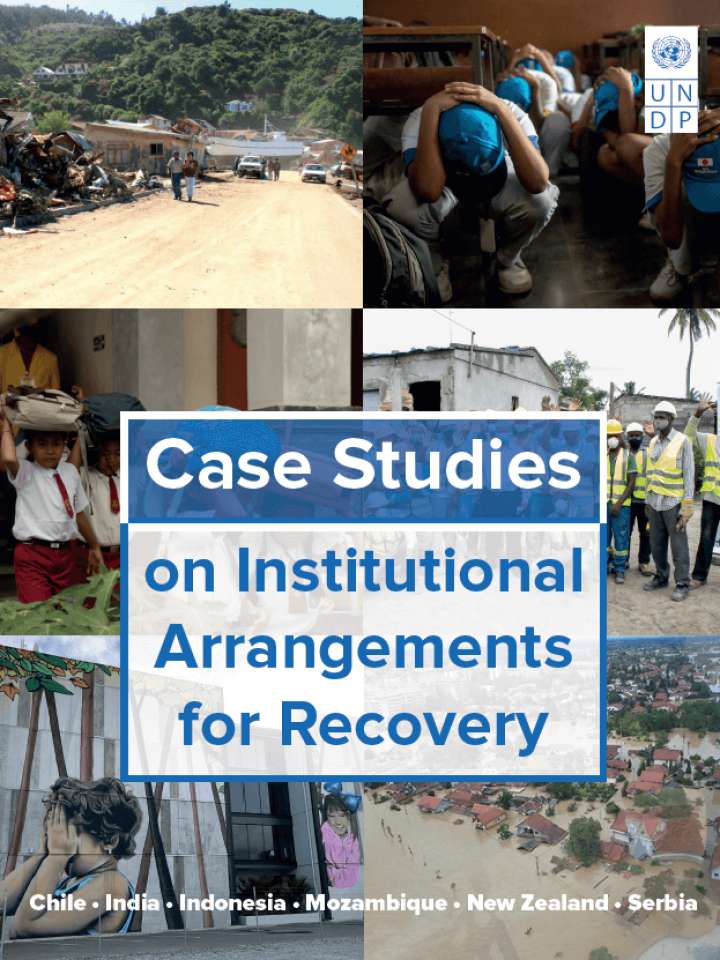Case Studies on Institutional Arrangements for Recovery
These case studies accompany the Handbook on Recovery Institutions is to inform the design of effective institutional arrangements for disaster recovery. They describe institutional structures, legal frameworks, and management lessons gleaned from practical experience across the globe. The case studies aim to provide recovery leaders with critical insights as they consider governance mechanisms suited to their own context, specific disaster scenarios, and institutional landscapes.
UNDP has extensive experience working with governments after major disasters and providing support as they consider the design of Institutional Arrangements for Recovery. These Institutional Arrangements ensure the achievement of the priorities and objectives laid out in a Disaster Recovery Framework.
This suite of six case studies should function as a guide for decision-makers interested in effective forms of public administration that enable a rapid response to the uncertainty that disasters create. The objective is to take some of the guesswork out of decision-making processes about Institutional Arrangements for disaster recovery.
Different institutional arrangements, public administrative functions, recovery management strategies, and the challenges and successes that were the consequence of different systemic choices are documented to allow the reader to consider different approaches and common problems across all the cases. Making a direct comparison between different models is complex due to differences in culture; political, institutional and development context; policy landscape; the scale of the event; and recovery needs generated by each disaster.
